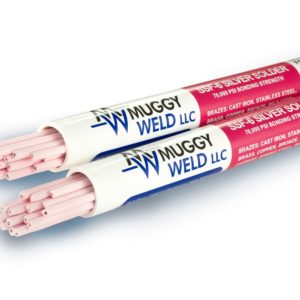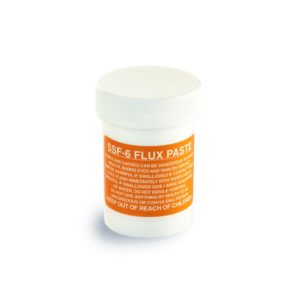If you’ve ever wondered how to braze steel with silver solder, this video is a must watch.
For this steel repair demonstration, we used a propane torch and SSF-6 silver solder to braze square steel tubing to mild flat bar steel.
SSF-6 has a lower working temperature than most high content silver solder–1150°F, so it will flow with any torch as long as the torch heat can bring the parent metal to the proper working temperature. If you’re working on large or thick metal, you would need to use a hotter torch such as oxyacetylene. For brazing small parts, however, propane will do the job nicely.
To prepare the metal for brazing, use a wire brush or other abrasive to thoroughly remove all oxidation and contaminates. Once the part is clean and ready to braze, begin to broadly heat both pieces, continually moving the torch to avoid overheating.
Gently apply the flux by laying the rod across the joint and melting it off with the heat of the torch. Be sure to apply flux to every joint you wish to bond. When you see the flux turn watery, that’s the indication to apply the solder rod. Continue to flow the rod with the torch until the joints are completely sealed, then allow the part to air cool
Remove the excess flux from the steel parts with warm water and a wire brush. As you can see, SSF-6 finishes very nice and needing no machine work.
SSF-6 silver solder can be chrome or nickel plated, machined, painted, powder coated, drilled, tapped, etc. Never again will you need to use your expensive MIG welder in most cases and change wire and gases.
This all in one rod can braze steel parts with just a hand held torch, leaving a professional looking finish.
SSF-6 is food grade and works equally well on stainless steel, brass, copper, cast iron, bronze, and chrome-moly.
Note: Please observe all AWS Safety & Health Guidelines when using Muggy Weld products.

